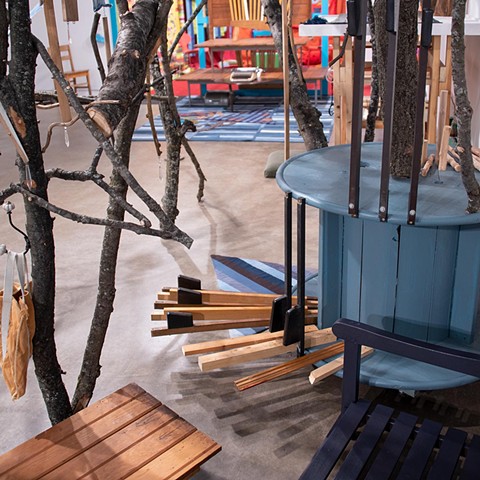She Kept These Things
With She Kept These Things, I am reconsidering the past, present, and future. Our relationship to our memories changes over time, and we have the agency to frame memories in ways that help to process loss so that grief is not debilitating. She Kept These Things reaches further back in my personal history than any work I have made. After the death of a parent, a process of sorting through belongings and making decisions begins. Many things that my siblings were willing to let go, I was not. I have become the keeper of toys, photographs, children’s artwork, furniture, even old blankets. Very few of these artifacts appear in She Kept These Things. The environments in the gallery include some of what I experienced as a young person, but they also invent places I would have delighted in then, and that I delight in now. Adults do not lose the joy that comes from exploration and discovery; this is part of what I mean when I say that my work continues the function of childhood play.
The extension of childhood play also refers to pushing boundaries, testing the environment to see what is possible. Fully traversing the spaces in She Kept These Things requires an adult to duck and change posture in various ways. This creates a focused awareness of the structures, an attention to spaces that are compressed and spaces that are expansive. It initiates exploration that will bring back memories of childhood, the joy of finding “secret” places to gather conspiratorially with other children, or to keep as places for solitude.
The phrase She Kept These Things references a Bible passage, “Mary kept these things, pondering them in her heart.” Mary is keeping memories, keeping secrets, ruminating, saving experiences, not objects. We all keep things—secrets, grief, pain, joy—and these thoughts and feelings are tied not only to objects, but to all sensate experience. The sound in the exhibition is the soundtrack of my childhood; my father in church and my sister playing the piano. We don’t choose the culture in which we are raised, we are born into it and grow through it and beyond it. The aspects of our youth that are atypical can give us things to share with others as we grow older and extend our community, or they can be things that we keep secret, private.
In She Kept These Things, I am very selective about personal objects, keeping most family artifacts private. However, I am sharing more of my childhood than I ever have with the sounds, with the references to a church environment, and with the thoughts and feelings typed on my mother’s old typewriter. Embrace these experiences. Spend time in these spaces.
Keep these things.
